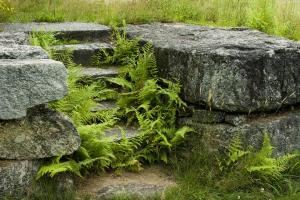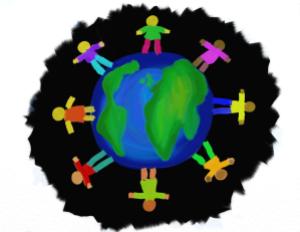 For a journey of the heart, it matters what I use as my guiding star.
For a journey of the heart, it matters what I use as my guiding star.
My heart journey began when I woke up and realized that my perspective and worldview was too small and limited. I wanted to find a way to expand the boundaries of my heart and life, to live as one member of a global family on our shared earthly home.
There was no need for this sort of journey when I believed what the culture told me—that we were already a nation of freedom and justice for all. So much of the culture was set up to distract me, especially as one with more cultural access and power, to keep me from noticing the injustice and inequities at the heart of my nation.
I began my heart’s journey, a journey toward justice, by first waking up to the world as it was, contradictory with its glorious beauty and soaring vision alongside its profound injustice and disrespect directed at certain groups of people.
Once I woke up, I saw brokenness all over the place: our treatment of the earth; our power and access inequities based on race, class, gender, age, sexual orientation, sexual identity, homeland or legal status. Many of these have hundreds or thousands of years of inequity behind them, but all are still riddled with injustice today.
Part of me is a fighter. Since I was a child, I’ve believed that the direct path is best and most efficient. Therefore, when I saw something wrong, I wanted to call it out and fix it.
There are compelling and very logical reasons to begin by fighting injustice head on. Once the cultural blinders have fallen away, injustice screams to be transformed from many directions at once. The need for immediate change feels urgent.
However, even stronger than the fighter within me was a longing for metanoia—a transformative change of heart. This required me to shift my orientation, both a spiritual and how-I-orient-in-the-world turning. To use metanoia, rather than fighting, my guiding star required that I begin my journey toward justice “outside the distress of oppression.”*
Those words—know myself outside the distress of oppression—are like a koan meant to shock me into a whole new way of seeing.
When the oppression, both within me and in the world around me, is so overwhelming and so flesh-and-blood real, why would I choose to begin outside of it? When the wrongs are so obvious (once I saw them), why would I choose not to directly fight the wrong and liberate the right?
And how can I, with all of my first-world, white skinned, wealthy, traditionally educated privilege, call myself oppressed?
The culture I was born into was complex and sophisticated. Its values were both honorable and grand (visions I love like freedom and inalienable rights, for example) as well as greedy and power-hungry (legal and tax bias toward corporations and people who are wealthy, or acting as if black lives aren’t as valuable as white lives, for example). I was schooled in these values in my public education, laws, popular novels, churches, playgrounds, advertisements, institutions and traditions. They seeped into my brain—as internalized oppression, prejudice against certain people, and a bias toward the status quo.
For me, I’ve struggled with the oppression of sexism (primarily internalized and directed against me) and with the oppression of a skewed world view that gave access and privilege to me—calling it normal and earned—while keeping me tragically blind to the inequity behind it all.
When I tried to stand within the mess of oppressor/oppressed, my sight was limited by the dichotomy, and I wanted to fight. Unfortunately, when I tried to fight the oppression I saw around me without simultaneously noticing and moving to transform the injustices in my own conscious and unconscious beliefs and behaviors, I kept slipping into the very injustice I was fighting to change.
But this journey isn’t only toward expanded sight and understanding. While metanoia is a transformation of the heart and Spirit—an internal realignment—unless stunted, it will naturally continue to unfold into a life that participates in the transformation of society.
That brings me back to “knowing myself outside the distress of oppression.” Who am I, who are you, who are we, outside the distress of oppression? What is it that interferes with each of us and keeps us from living from the fullness and uniqueness that is our birth right?
For me, orienting myself outside the distress of oppression has been the most demanding journey of my life. Stepping outside the oppressor/oppressed dichotomy requires that I take responsibility for myself and continually align my beliefs and actions with my values of justice, love and equity. Self-knowledge and self-responsibility are the keys to both personal metanoia as well as sustainable social change. I need to act with integrity, no matter what injustice I am experiencing. Change is possible in any moment, but it requires someone (like me) to act, respectfully and honestly, and thus open up a space that opens the possibility for justice to emerge, moment by moment.
I have patterns, mostly unconscious, that still emerge from time to time. I get uncomfortable or scared and go silent. I don’t like sitting in my own fear and project it onto others. These behaviors tend to show up when I am tired, irritated or feel like someone is treating me unjustly. For me, stress is the doorway through which my old habits and unconscious beliefs tend to emerge.
But that is very dangerous. Most fracturing of relationships and partnerships, especially across cultural differences, happen in moments of stress or conflict. If I don’t learn how to change my behavior and thinking at the roots—seek metanoia—stressful times will continue to be moments when I am not able to sustain my values and respectful behavior. Instead of being part of the healing, I will participate in the brokenness.
My journey toward justice requires me to keep metanoia as my guiding north star. Only then can I keep my sight free and flexible enough to focus outside the distress of oppression. I walk on this journey with many friends and partners, mutually taking time to lovingly but firmly support each other as we navigate the path of justice. There is no need for shame as together we know we are on a journey of learning and alignment.
But even when my friends are not around, I am not alone. Spirit is always present. The natural world opens her arms to me. I am part of the human family. In addition, this journey has led me into a powerful, healing relationship to the diversity that is within me. Demanding as this journey has been, following metanoia as my guiding star is leading me on a joyful journey home.
*This is the first step of Be Present Inc.’s Be Present Empowerment Model.
 Big Topics at Midnight’s dedication reads, “My ancestors and I dedicate this book to [my grown children] Paul and Laura. May you and other young adults and children around the globe today, as well as your children, benefit from my generation’s work to create the transformation we long for. Blessings as you live your own lives fully, wildly and boldly.”
Big Topics at Midnight’s dedication reads, “My ancestors and I dedicate this book to [my grown children] Paul and Laura. May you and other young adults and children around the globe today, as well as your children, benefit from my generation’s work to create the transformation we long for. Blessings as you live your own lives fully, wildly and boldly.” gone from this earth and this one so newly arrived all encourage me choose integrity, love, equity and respect in every moment. And to have fun along the way.
gone from this earth and this one so newly arrived all encourage me choose integrity, love, equity and respect in every moment. And to have fun along the way. My cooking claim to fame is that I can open the refrigerator, scan the shelves, then create a meal out of whatever is available. (Leftover Oatmeal Cobbler. Salsa and Vegetable Soup.) I may check a recipe, but only to play with possibilities. If I have a handful of apricots, I might mix together something Moroccan. Sprigs of cilantro could lead to Whatever-I-Have-on-Hand Enchiladas. Scanning the shelves, I am curious to find out what dish will emerge from the random ingredients I find there. No fears or what-ifs. I’m not concerned with tomorrow’s lunch or next week’s dinner. And I trust that whatever I make will be edible, and often delicious.
My cooking claim to fame is that I can open the refrigerator, scan the shelves, then create a meal out of whatever is available. (Leftover Oatmeal Cobbler. Salsa and Vegetable Soup.) I may check a recipe, but only to play with possibilities. If I have a handful of apricots, I might mix together something Moroccan. Sprigs of cilantro could lead to Whatever-I-Have-on-Hand Enchiladas. Scanning the shelves, I am curious to find out what dish will emerge from the random ingredients I find there. No fears or what-ifs. I’m not concerned with tomorrow’s lunch or next week’s dinner. And I trust that whatever I make will be edible, and often delicious.
 For a journey of the heart, it matters what I use as my guiding star.
For a journey of the heart, it matters what I use as my guiding star.






